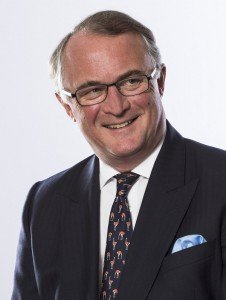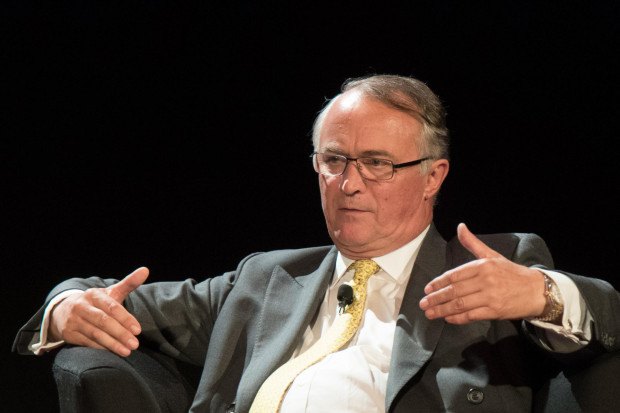FROM THE ARCHIVES: A VINTAGE CARRIER MANAGEMENT ARTICLE FROM 2015
The unexpected combination of XL Group and Catlin came after two years of trust-building communication between the leaders of the firms, according to one of the executives involved in the deal.
Executive Summary
“The company is bigger than the individual.” That’s the simple statement that XL Catlin Executive Deputy Chairman Stephen Catlin uses to sum up a key reason for broaching the subject of combining his company with XL Group during a conversation with Mike McGavick on a plane trip from Brussels to London two years ago.But when Stephen Catlin initially broached the idea during an informal chat with XL Group’s longtime leader Michael McGavick back in 2013, even McGavick admitted that he had never envisioned the possibility of the two firms coming together, Catlin’s founder recalled recently.
“Stephen, I have a list and you’re not on it. I never thought for one second that you would contemplate this sort of transaction,” McGavick told Catlin, according to Catlin’s report.
Catlin described the anatomy of the deal during a presentation at the IICF Women in Insurance Global conference last month, recounting the events leading up to his encounter with McGavick and explaining the rationale that propelled the deal forward.
Heading back from an annual meeting of insurance executives on a plane from Brussels to London, Catlin said he picked up a conversation the two men had started at an industry reception a night earlier with a question from Catlin to McGavick. It went something like this:
“Mike, what do you think is going to happen to our industry in the next two to five years?”
“It’s going to consolidate.”
“Fine. When?”
“I reckon it will start in two to five years. What do you think, Stephen?”
“I actually pretty much agree….”
Reviewing more details of the prospects of industry consolidation and the drivers during that second-day plane trip, Catlin recalls nearly jolting McGavick out of his seat with an unexpected follow-up question: “Mike, in light of this conversation, is there any merit in us having a conversation?”
The offhand proposal of the potential combination of XL and Catlin is what prompted McGavick to reveal that he had assumed the possibility was unthinkable for Catlin, who by that point had grown his company from a small managing agency at Lloyd’s of London into a multinational insurance enterprise with more than 2,200 employees in 60 offices in 22 countries around the world nearly 30 years later.
So why did Catlin contemplate such a deal?
“The company is bigger than the individual,” Catlin said during his presentation at the IICF conference.
“It wasn’t obvious to a lot of people in Catlin that we should be sold,” said Catlin, now the executive deputy chairman of XL Catlin. “It wasn’t my particular desire to stop being CEO,” he added. “But I have a duty of care to our shareholders, to our staff, to our distribution, to our policyholders to do what is right for the company.”
Catlin also told IICF WIGC attendees that he believes the merger of XL and Catlin will be a success. “I don’t think it’s a slam dunk,” he added, noting that there are scores of challenges in any consolidation. “In the industry today, while I think there will be more consolidation—it’s happening as we speak—I am certain it won’t all work because I am certain that people won’t spend the time to trust each other, to communicate with each other and to work together. That’s what is going to make the difference,” he said.
Trust, Communication—and Creating Choice

Stephen Catlin, Executive Chair, XL Catlin
Catlin’s talk at the IICF conference mainly revolved around the themes of establishing trust, communicating and the notion of getting out in advance of the consolidation trend to choose a merger partner. That last idea is something he shared publicly during the very first conference call with industry analysts on the day XL’s intent to buy Catlin for $4.2 billion was officially announced in January of this year.
“If you believe consolidation is happening, then why wouldn’t you want to get out on your front foot, be proactive and choose your partner,” he asked.
“I was speaking from the heart,” he told the audience at the IICF conference, noting that the unplanned remark has been quoted many times since. “I like working with people I like. I completely dislike working with people I dislike,” he continued. “So we do have choice. But sometimes we have to create choice. And sometimes we have to do things that aren’t immediately obvious,” he said, referring to the very idea of offering Catlin Group for sale.
“Things like consolidation, if they start to happen, there is nothing that any one of us individually can do to stop it. It’s a reality,” he asserted. And the belief that you have to get the culture right if you’re going to do M&A is a truism, Catlin said.
After choosing each other, Catlin and McGavick spent 18 months just talking through the fit—”trying to make certain that our values were the same, that what we were trying to achieve was the same,” Catlin said. “By the time we came to talk to our colleagues about this, we had already formed a working understanding,” he said, going on to explain the need to build trust between people as quickly as possible when two companies are coming together.
“You cannot go to the supermarket and buy yourself a pound of trust. It’s not for sale. Trust is something that you earn on an individual basis, on a corporate basis,” he said, noting that there are two roads to trust-building in an M&A scenario. One is to sit back and watch one another and say, “Maybe in a year’s time, we are going to start to trust you.” The other is saying from the start, “Actually, I want to be trusted. I want to earn that trust. Therefore, I’ll give some trust to you and see what happens.”
“I’m not suggesting that you trust the wrong person, but you have to work at being trusted. It doesn’t just happen. And when you bring two companies together, that’s really important,” he stressed.
The Central Question: Is Consolidation Going to Happen?
Catlin and McGavick were clearly of like mind on the central idea that near-term consolidation is inevitable for the insurance industry. What did they see to support their view?
“Do I think big is beautiful per se? No, I couldn’t possibly say that. We started 31 years ago with two people at Catlin growing something from scratch,” Catlin told women gathered at the IICF conference. “But being relevant, being cost effective has an attraction to it,” he explained.
“And the fact of the matter is, today, the cost of regulation…is going up. Our clients are tending to get bigger and bigger,” he said, driving home the point that there’s a “substantial cost” to building global insurance businesses.
One of the benefits of putting together XL and Catlin relates to getting rid of some of the cost base, he said. “Instead of 135 offices around the world, we would have 75 covering the same cities,” for example, he said.
Catlin and McGavick did not have to wait very long for their industry consolidation thesis to be proven. Catlin recalled that news of the XL and Catlin deal was leaked late last year, and “on the very day of the leak, serious conversations started between two other companies.”
“They are still fighting,” he said, referring to a proposed deal between AXIS Capital and PartnerRe that has now been challenged by a competing bid from EXOR. (The AXIS-PartnerRe deal was officially announced in late January, roughly a month after the leak and a week after XL and Catlin officially announced their deal.)
The leak, while disappointing in that it indicated a breach of confidence from someone inside XL or Catlin, actually proved beneficial for the transaction partners. “We had all the way through Christmas and New Year’s to think about it [and] interestingly, our businesses grew during the period. So we knew we were getting shareholder, client and broker support,” he said.
Asked for his risk management advice in preparing for a leak, Catlin offered words of advice for other insurers involved in similar transactions. “If you are going into these types of public transactions, there is always the risk of a leak. [And] in the process, that risk grows exponentially because more people know about what’s going on. At the time, we had about 250 people in the know. It had grown from two people to 250 in the space of about three months.”
“What you have to do is have a leak document set up ahead of time. You have to preplan what you’re going to say if it happens,” he said.
When rumors of the potential merger started appearing in the press, the companies issued media statements confirming the rumors in December and briefly explaining the deal drivers.
“Be aware of what happened, and then use it to your advantage. We didn’t want it to happen, [but it] actually got the market to think about our transaction ahead of time,” Catlin advised. The key to a good response is preparation. “And don’t panic,” said the industry veteran.
At about the same time, the International Insurance Society announced that Catlin would be receiving the society’s Insurance Hall of Fame honor for 2015. The induction took place at the 2015 IIS Global Insurance Forum in June.





















 NOAA Announces Latest AI-Driven Global Weather Models
NOAA Announces Latest AI-Driven Global Weather Models  Nearly Half of 100 Largest P/C Insurers Destroy Value: ACORD
Nearly Half of 100 Largest P/C Insurers Destroy Value: ACORD  Slideshow: Carrier Management’s 2025 Top Editor’s Picks (Unlocked)
Slideshow: Carrier Management’s 2025 Top Editor’s Picks (Unlocked) 






